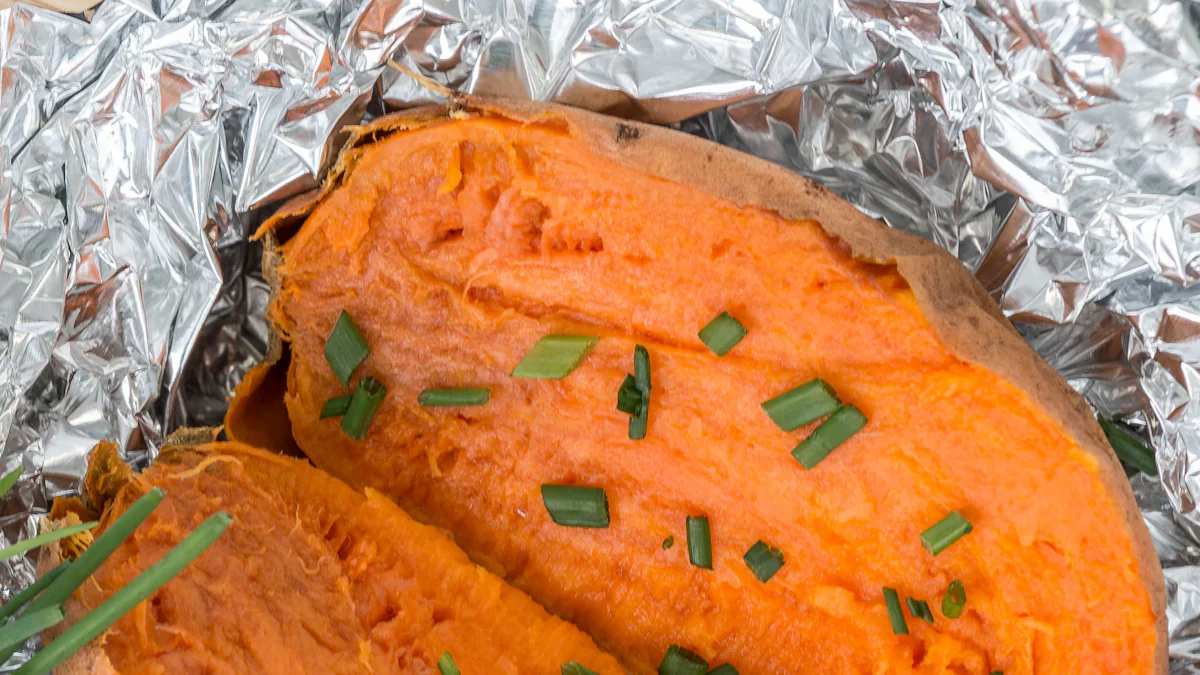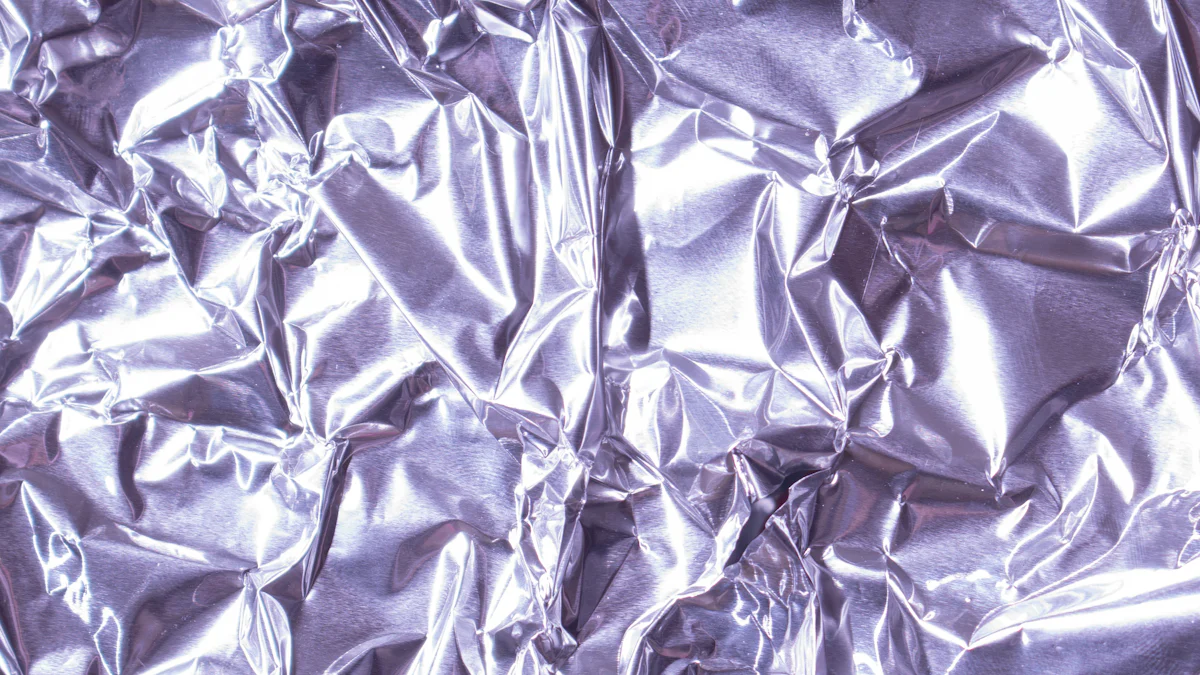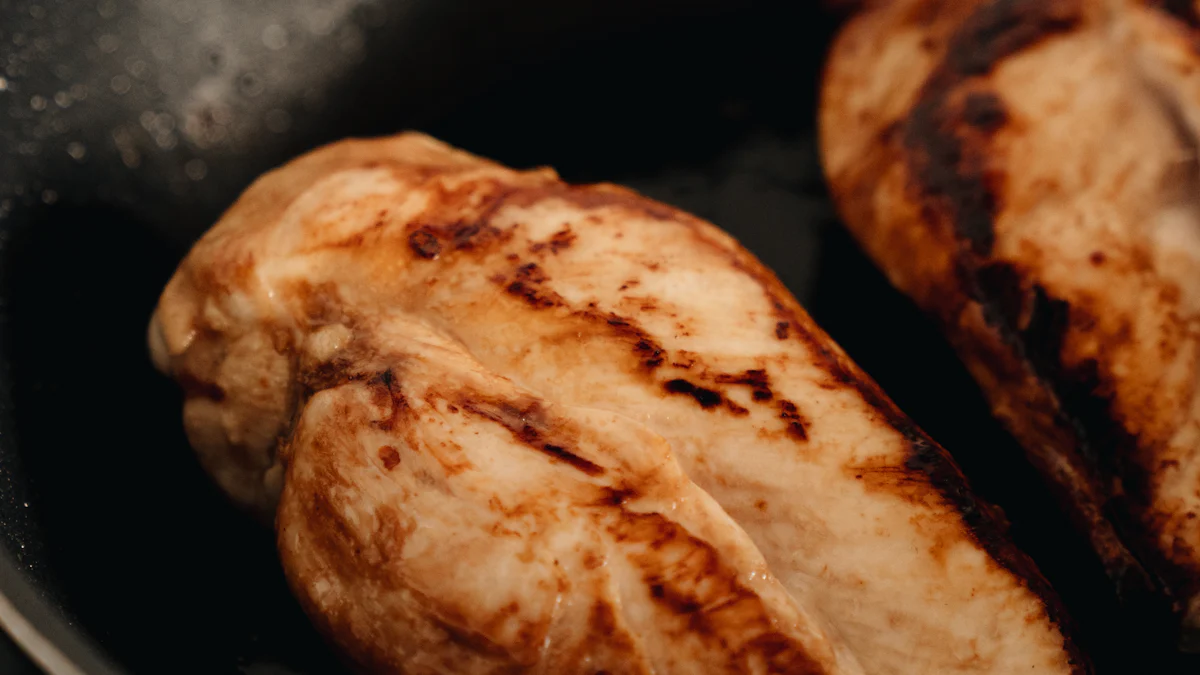Is it better to use parchment paper or foil in an air fryer?

Air fryers have surged in popularity, with 93.4% of households owning this innovative kitchen appliance. The demand for air fryers is evident as the global sales are projected to reach 106.50 million units by 2028. In the United States alone, 93% of homes boast a trusty air fryer. The industry's growth is remarkable, expected to hit a whopping USD 1 billion by 2025. Given these staggering figures, understanding the right materials for your air fryer becomes crucial.
Understanding Parchment Paper and Foil

What is Parchment Paper?
Composition and Properties
Parchment paper, a cellulose-based paper that undergoes an acid treatment for stability, boasts non-stick properties. This paper's composition includes silicone, rendering it heat-resistant and greaseproof, ideal for cooking applications.
Common Uses in Cooking
Baking: Parchment paper serves as a reliable liner for baking sheets, preventing food from sticking and ensuring even browning.
Steaming: It is a versatile tool for creating parchment packets to steam vegetables or fish, locking in flavors and moisture.
Air Frying: In the realm of air fryers, parchment paper shines as a convenient liner that simplifies cleanup while promoting optimal airflow around the food.
What is Aluminum Foil?
Composition and Properties
Aluminum foil consists of aluminum alloy rolled into thin sheets, offering excellent heat conductivity and insulation properties. Its malleability allows for easy shaping around various food items.
Common Uses in Cooking
Grilling: Aluminum foil acts as a barrier against direct flames during grilling, protecting delicate foods like fish or vegetables.
Roasting: When roasting meats or vegetables in the oven or air fryer, wrapping them in foil helps retain moisture and flavors effectively.
By understanding the distinct characteristics and applications of both parchment paper and aluminum foil, individuals can make informed decisions on their culinary adventures.
Safety Considerations
Using Parchment Paper in an Air Fryer
Heat Resistance
Parchment paper exhibits impressive heat resistance, capable of withstanding temperatures up to 428°F in an air fryer environment. This quality ensures that the paper remains intact during the cooking process, providing a safe and reliable barrier between the food and the air fryer basket.
Potential Risks
Despite its heat resistance, parchment paper can pose risks if not used correctly. It is crucial to ensure that the parchment paper is properly secured under the food items to prevent it from flying around due to the air circulation within the fryer. Additionally, using parchment paper that is too small or lightweight may lead to it getting sucked into the heating element, potentially causing a fire hazard.
Using Aluminum Foil in an Air Fryer
Heat Conductivity
Aluminum foil, known for its excellent heat conductivity properties, can effectively distribute heat around food items in an air fryer. This conductivity helps in even cooking and can aid in retaining moisture within the food during the air frying process.
Potential Risks
While aluminum foil offers good heat conductivity, it comes with certain risks when used in an air fryer. The foil can disrupt airflow within the appliance, leading to uneven cooking or hot spots on your food. Moreover, if not handled carefully, aluminum foil can tear or puncture easily, potentially exposing your food to direct heat and affecting its overall quality.
By understanding these safety considerations when using parchment paper and aluminum foil in an air fryer, individuals can make informed decisions to ensure both effective cooking results and kitchen safety.
Performance Comparison

Cooking Efficiency
Heat Distribution
Parchment paper, being heat-safe and non-reactive, ensures even heat distribution around the food items in an air fryer. This quality helps in preventing hot spots and promotes uniform cooking, leading to perfectly cooked meals every time.
Cooking Time
When comparing parchment paper to foil for cooking efficiency, parchment paper proves to be a reliable choice for reducing overall cooking time. Its ability to retain moisture while allowing proper airflow contributes to faster and more efficient cooking processes, making it an excellent option for time-sensitive recipes.
Food Quality
Crispiness
Parchment paper excels in maintaining the desired crispiness of various foods cooked in an air fryer. By providing a protective layer that allows hot air circulation, parchment paper helps achieve crispy textures without compromising on the food's natural flavors or moisture content.
Flavor Retention
In terms of flavor retention, parchment paper surpasses foil by preserving the authentic taste of the ingredients without any metallic undertones. This quality makes parchment paper a preferred choice for dishes where flavor integrity is paramount, ensuring that your meals are not only cooked to perfection but also taste delicious with every bite.
Practical Tips for Using Parchment Paper and Foil
Best Practices for Parchment Paper
Cutting and Placement
When using parchment paper in your air fryer, ensure to cut it to the appropriate size that fits snugly at the bottom of the basket without overlapping the edges.
Place the cut parchment paper flat at the base of the air fryer basket, ensuring it does not cover the entire surface to allow proper airflow around your food items.
Avoiding Fire Hazards
To prevent potential fire hazards when using parchment paper, always keep it away from direct contact with heating elements or open flames within the air fryer.
Avoid using torn or damaged parchment paper as it can lead to uneven cooking and increase the risk of accidental fires during operation.
Best Practices for Aluminum Foil
Wrapping Techniques
When utilizing aluminum foil in your air fryer, employ a gentle touch while wrapping food items to avoid tearing or puncturing the foil.
Ensure that the foil is securely wrapped around your food, leaving no loose ends that could interfere with the airflow and cooking process.
Preventing Damage to the Air Fryer
To prevent damage to your air fryer when using aluminum foil, avoid placing sharp-edged or pointed food items directly onto the foil.
Regularly inspect the condition of the foil inside the air fryer to check for any signs of wear or tear that could potentially harm the appliance's interior components.
By following these practical tips for using both parchment paper and foil in your air fryer, you can enhance your cooking experience while maintaining safety and efficiency throughout your culinary endeavors.
In conclusion, parchment paper emerges as the preferred choice for most air fryer enthusiasts due to its versatility and safety features. It ensures even heat distribution, enhances food quality, and simplifies cleanup. However, foil can be beneficial when used correctly, especially for containing drips or creating foil packets. To determine the best option for your culinary needs, experiment with both materials while adhering to safety guidelines. Remember to prioritize safety by avoiding direct contact with heating elements and regularly inspecting the condition of your chosen liner.
See Also
Benefits of Using Minimal Oil in an Air Fryer
Is Pyrex Safe to Use in an Air Fryer
Comparing 40 Qt Air Fryers and Convection Ovens
